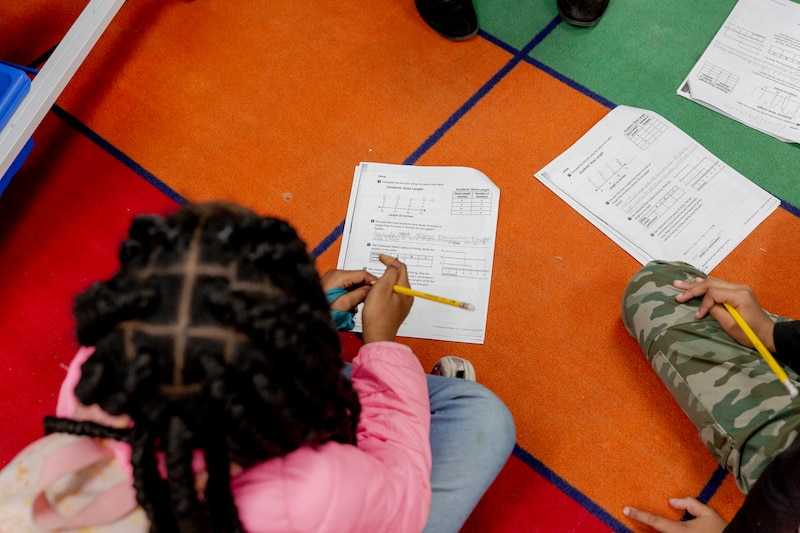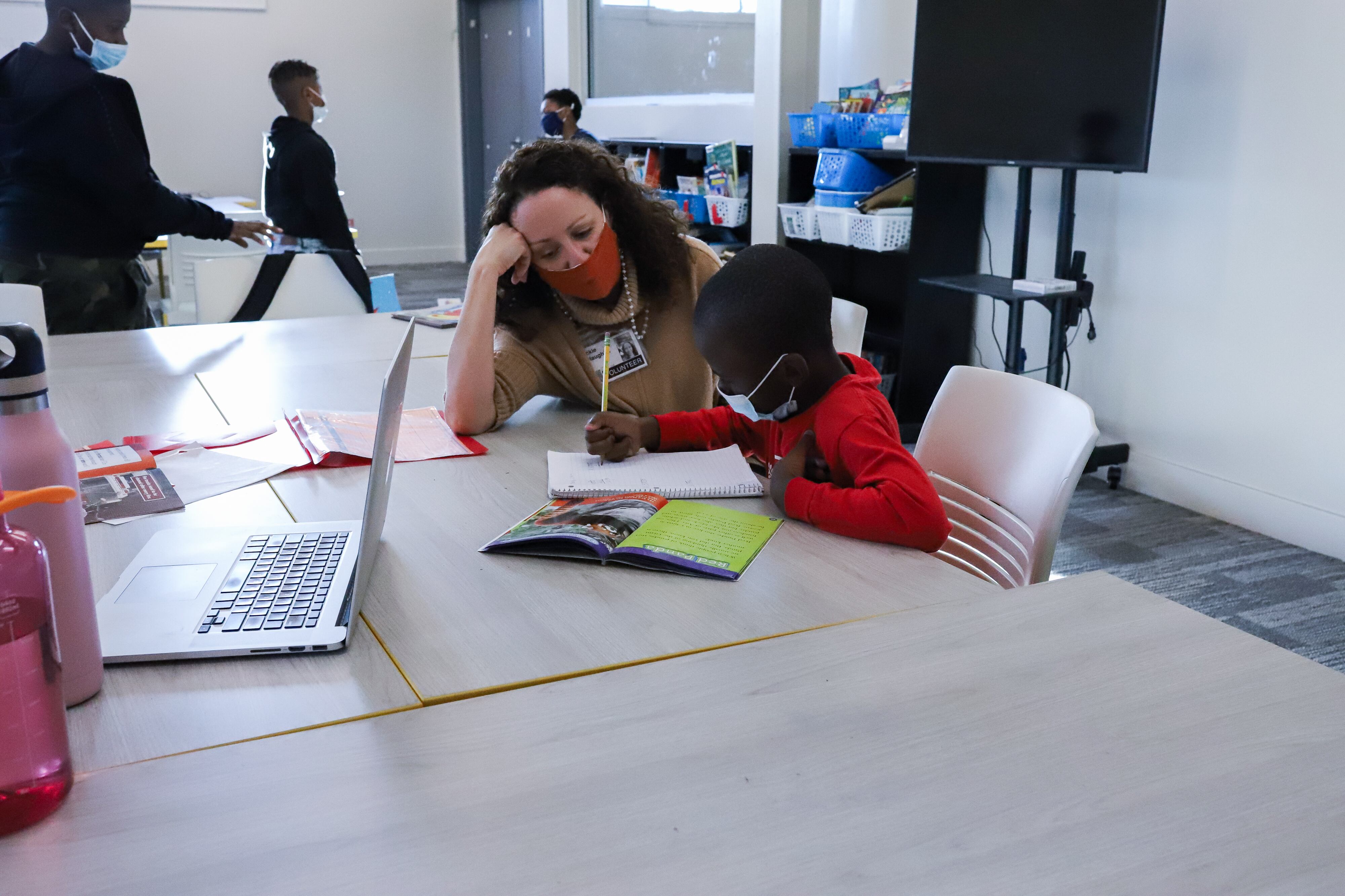Tutoring was supposed to be schools’ secret weapon — a way to reverse pandemic learning loss before students fell even further behind.
But three years after COVID closed schools, and with the deadline to spend pandemic recovery funds fast approaching, many students still aren’t getting the help they need. By some estimates, just 1 in 10 students — or fewer — are receiving intensive tutoring.
The good news? Experts say it’s still possible to drastically expand tutoring. Millions more students can get the help they need, the experts said, if leaders are willing to do what it takes.
“There is an enormous need right now,” said Naeha Dean, chief strategy officer of Accelerate, a nonprofit that funds research on effective tutoring. “We really can’t wait.”
Chalkbeat asked a dozen experts how to ramp up effective tutoring. Here’s what they said:
Schedule tutoring during the school day
Most schools say they offer tutoring, yet few students actually receive it. Why?
One big reason is that tutoring is often held after school, which all but ensures low participation. Families must consent to after-hours tutoring and figure out transportation, and students must show up. Each step shrinks the pool of participants.
During-school tutoring side steps those challenges, allowing most students to attend. Students also tend to take tutoring more seriously during school than after, when programs often feature snacks and playtime alongside academics.
Most importantly, tutoring during school is more effective. A 2020 research review found that the academic impact of tutoring during school is roughly twice as large as tutoring after school.
“The science tells us that students are much more tuned in, plugged in, not fatigued, ready to engage, during the school day,” said Jen Mendelsohn, co-founder of Braintrust, which runs school tutoring programs.
It can be tough to squeeze tutoring into the school day, but experts say it’s possible by repurposing existing class periods or creating new ones. For example, the charter school organization Uncommon Schools shaved a few minutes off each period, freeing up 30-40 minutes each day for teachers to tutor small groups.
After-school tutoring just isn’t feasible for some families, said Juliana Worrell, Uncommon’s K-8 chief of schools. “So what we have concentrated on is incorporating tutoring into our actual school day.”
Turn school staffers into tutors
Many school leaders say they can’t find or afford enough tutors. Luckily, one solution is already in the building.
Nationwide, schools employ more than 880,000 paraprofessionals, or classroom aides, who assist teachers and support students with disabilities. That’s more than the number of principals, guidance counselors, and school librarians combined.
Often overlooked and underutilized, paraprofessionals can make great tutors, experts say. First, they are more racially diverse than teachers, which can benefit students. Second, they are already district employees, saving schools the time and cost of hiring outside tutors. Most importantly, they’re effective.
Tutoring studies have consistently found that paraprofessionals are second only to teachers in their ability to boost student learning. (The studies also count aspiring teachers as paraprofessionals.)
With “proper supports, such as good materials and coaching, they can be excellent tutors,” said Stanford professor Susanna Loeb, who founded the National Student Support Accelerator to expand access to high-quality tutoring.
If principals are eager to use classroom aides as tutors but not sure how, they can turn to companies like Once. The firm, which works with schools in about 10 states, provides training and a curriculum to help school support staff teach reading to kindergartners. The daily tutoring sessions are then recorded so Once coaches can review the footage with tutors and offer feedback.
The service is much less costly than hiring additional tutors, said Once CEO Matt Pasternack. And it has the added benefit of putting some paraprofessionals on the path to becoming teachers.
“By the end of one year with us, they’ve gotten 20 hours of coaching in the science of reading,” he said. “There’s a lot more to learn before becoming a classroom teacher, but it’s a great foundation.”

Tap other talent pools for tutors
Schools can also find an ample supply of would-be tutors outside their walls.
One natural talent pool is the country’s estimated 600,000 aspiring teachers. Before they begin student teaching, educators-in-training often spend extensive time observing K-12 classrooms. But some teacher training programs have started using that time for tutoring, which lets aspiring teachers gain experience while assisting students.
“Research is clear that practice matters for aspiring teachers,” said Patrick Steck, senior policy director at Deans for Impact, a nonprofit working to deploy more student teachers as tutors.
Local officials are finding solutions to the inevitable logistical challenges, Steck added. For example, some teaching programs have rescheduled classes to not conflict with tutoring, while some cities and school districts cover tutors’ transportation costs.
Other college students can also make great tutors, though making that happen can be a burden for schools. Several states have stepped in to help, launching programs that recruit, train, and pay college students to work as tutors. For example, California’s new College Corps fellowship is paying college students $10,000 to tutor K-12 students this school year. Interest was high, with about three undergraduates applying for every fellowship slot, according to the state.
Parents and caregivers are another source of tutoring talent. The parent-led nonprofit Oakland REACH shows how that can work. The group recruited parents during school dropoff and pickup, then paid them a stipend to attend a six-week training on how to teach reading. The parents, whom the group calls Literacy Liberators, are now district employees earning pay and benefits to tutor students during school.
“It starts with changing your mindset about how you see our communities,” said Oakland REACH CEO Lakisha Young. “We see our parents are very powerful — we see them as the change agents.”
Use virtual tutoring wisely
Virtual tutoring can be a godsend for schools. It lets harried administrators outsource the heavy lifting and, in theory at least, allows students to get help even from home.
But there’s a big problem with virtual tutoring: Many students never use it.
One of the most popular services, Paper, lets students chat with tutors by text message 24/7. But in several school districts, only a tiny fraction of the students who have access to the service use it. And struggling students who most need help are often the least likely to log on.
Programs where students and tutors meet by video after school have also struggled with attendance. For example, in Indianapolis, only about 1 in 3 students who signed up for after-school virtual tutoring attended more than one session, officials said.
But the good news is that virtual tutoring — when done right — can be highly effective, said Loeb, the education professor who has studied online tutoring.
“Some virtual programs show dramatic effects for students,” she said in an email.
The programs work best during the school day, with adults in the classroom supervising as students work with their virtual tutors, Loeb said. Students should attend several tutoring sessions each week, and tutors should receive coaching and high-quality materials.
“What makes a good virtual tutoring program,” Loeb said, “is very much the same as what makes a good in-person tutoring program.”
States and feds must step up
Creating large-scale tutoring programs is costly and complicated — and probably not the best use of superintendents’ time.
“You can’t just leave it up to 13,000 school districts to figure out,” said Morgan Polikoff, a University of Southern California education professor. “State and federal governments have to get more involved.”
There are several ways to do that, experts say.
States can vet tutoring providers, develop clear guidelines, and help with tutor recruitment. Sixteen states have gone even further and established their own tutoring programs, according to an analysis by the Council of Chief State School Officers.
The Biden administration launched a public-private partnership that promotes effective tutoring practices and provides technical assistance to districts. But experts say the federal government could do more to incentivize schools to offer tutoring and remove roadblocks. For example, federal work study rules could be expanded so more college students and aspiring teachers are paid for tutoring, according to a new Deans for Impact report.
Whatever officials do, they must move quickly, tutoring proponents say.
“Students are still in school and they are not receiving the betterment they’re entitled to,” said Mendelsohn, the tutoring provider. “This is their fundamental right.”
Kalyn Belsha contributed reporting.
Patrick Wall is a senior reporter covering national education issues. Contact him at pwall@chalkbeat.org.






